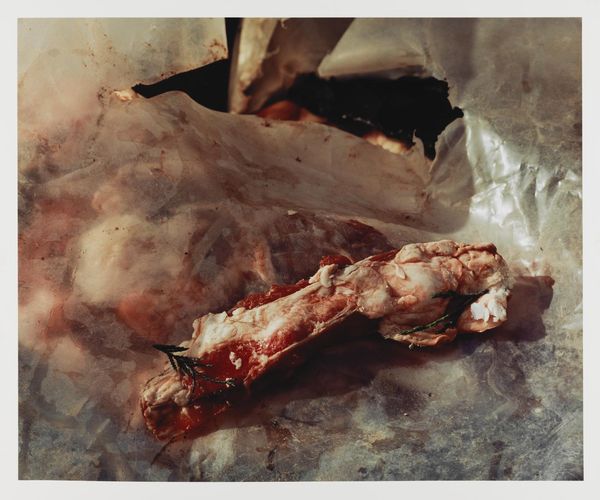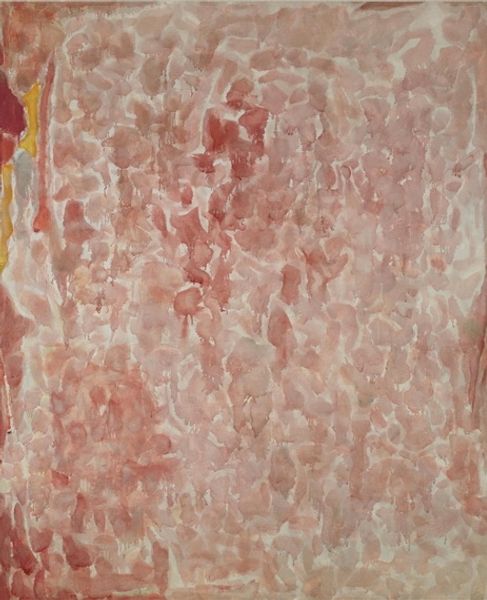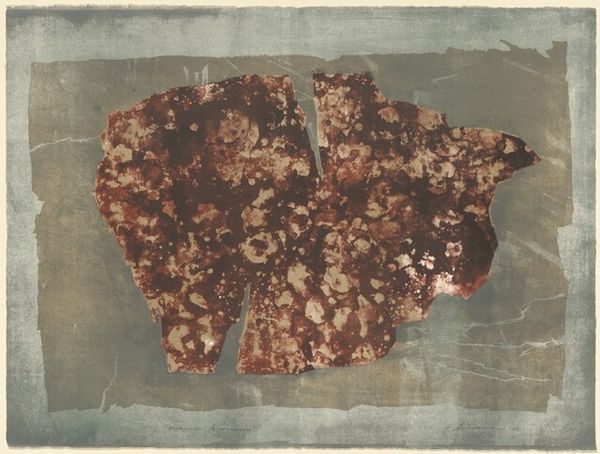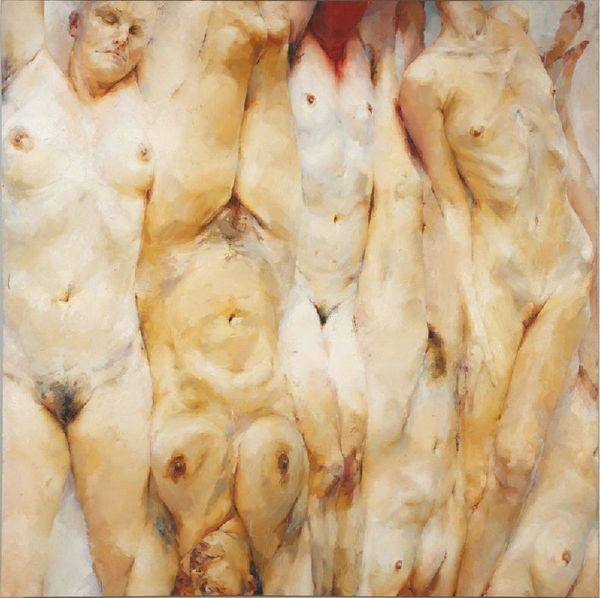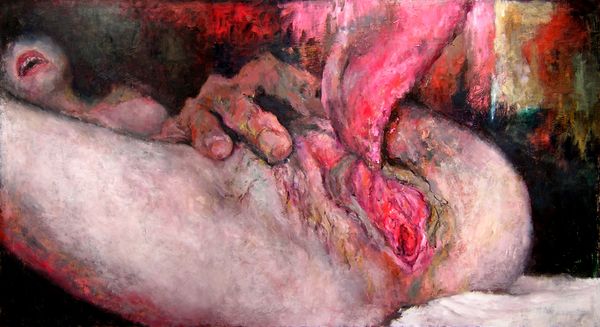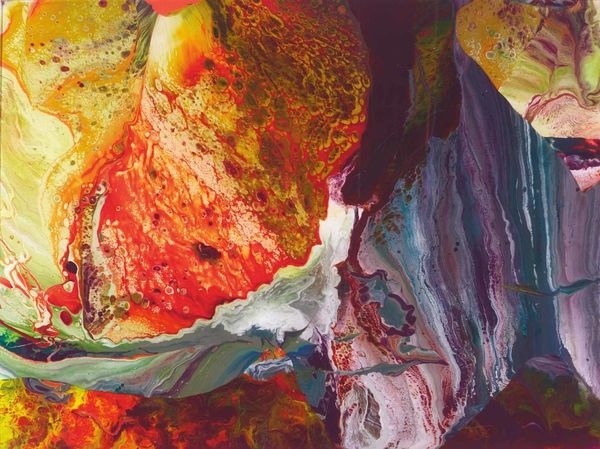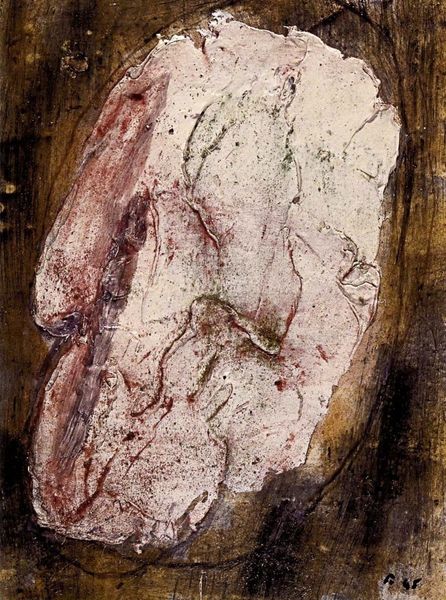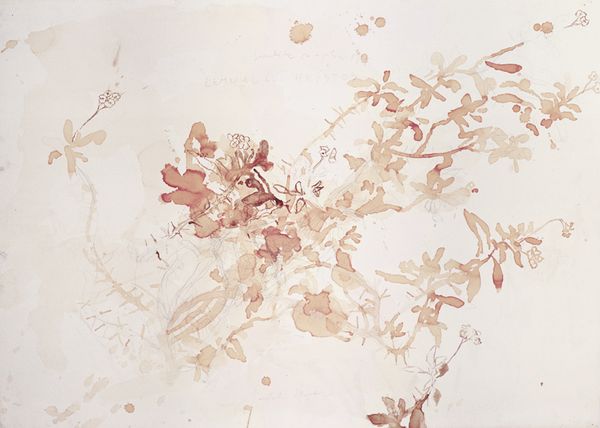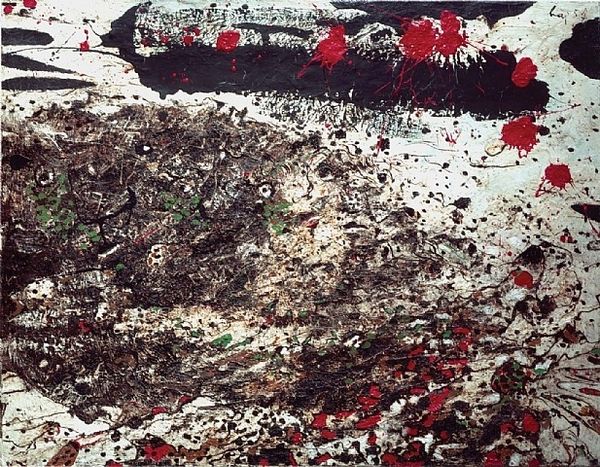
assemblage, photography
#
still-life-photography
#
conceptual-art
#
assemblage
#
postmodernism
#
appropriation
#
photography
Dimensions: image: 46.7 × 57.7 cm (18 3/8 × 22 11/16 in.) sheet: 50.7 × 60.8 cm (19 15/16 × 23 15/16 in.)
Copyright: National Gallery of Art: CC0 1.0
Curator: At first glance, this artwork hits you with an undeniable aura of decay. Editor: I can see that. The series we are featuring today is Keith Arnatt’s “Pictures from a Rubbish Tip,” created between 1988 and 1989. He embraced photography as his artistic medium here. Curator: So, we are faced with fragments: food remnants, perhaps packaging, strewn across a surface—possibly a cloth or plastic sheet with a faded floral pattern? There's a rather melancholy feel to it all. It speaks of abandonment, a sort of still life, but corrupted. Editor: Absolutely. And it also engages a bit with Postmodern art's inclination toward appropriation. Arnatt isn't just documenting refuse, is he? He's reframing it, elevating the discarded, granting it artistic value and triggering reflection on waste. Do you think of ideas around beauty there? Curator: That's an interesting angle to ponder. Within the squalor and disintegration there might exist a somber beauty. A reminder of impermanence, you might say. Consider how, from ancient vanitas paintings, objects act as memento mori, alerting us to our mortality. These bits of refuse, by Arnatt, do much the same, don't you think? Editor: Indeed! But through a wholly contemporary lens. Unlike typical memento mori though—skulls and candles—these are artifacts of consumer culture: food and discarded products! So it's less an intimate awareness of death, but a societal reflection on waste. The artist compels you to inspect our habits of waste, doesn’t he? Curator: Fascinating. So by taking symbols—once objects—of value and allowing them to decline, to crumble and be defiled by outside elements, Arnatt offers a meditation. Editor: It’s both aesthetically intriguing and emotionally affecting. Arnatt, through capturing garbage, compels me to recognize how even the most repulsive or banal can evoke emotions. Waste not, want not... a visual aphorism perhaps!
Comments
No comments
Be the first to comment and join the conversation on the ultimate creative platform.
